8 things I wish I knew before I started hiking with my dog
From dodging farm dogs to hoisting my pooch over huge stiles – here’s what I wish I’d known before hitting the trails with my canine companion
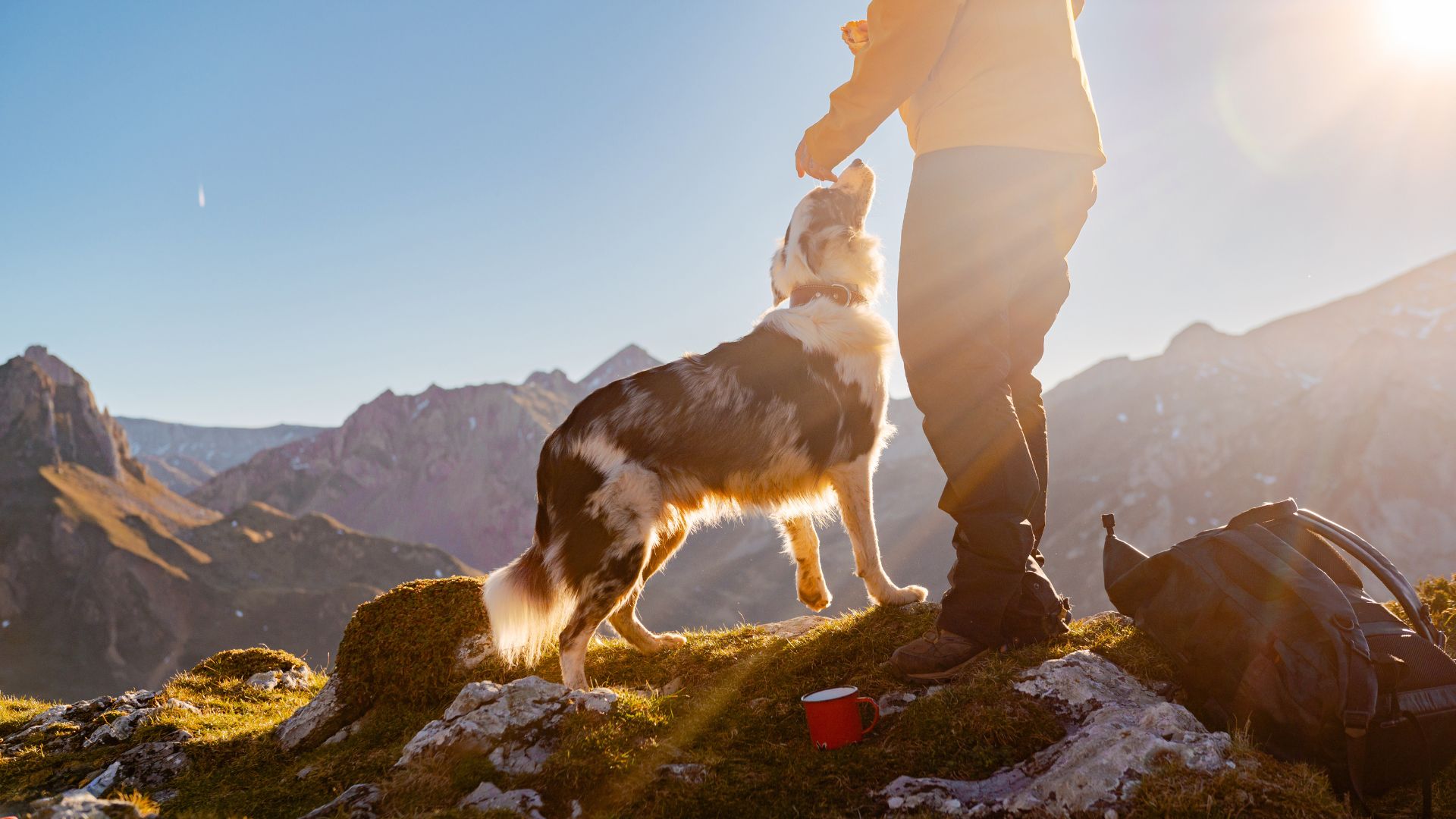
On my last coastal hike before I got my first dog, I felt thrilled. My partner prefers to cover ground on two wheels rather than two legs, so if we’re away together I often solo hike from the van while he bikes. I enjoy the quiet time, but how much more fun was it going to be to have a happy, waggy companion by my side, one whose excitement about the great outdoors matched mine?
Rounding a corner at the top of a descent, I saw an unlikely group ascending the trail: a man carrying a baby, both wearing flat caps, with a dachshund and a Yorkshire terrier, both dressed in red bowties.
I felt confident: I didn’t know much about dogs, but I knew not to dress them in red bow ties and take them on a demanding, exposed walk in the sweltering heat.
However, after getting into a few scrapes in the first year of having my dog, I realized there is a lot more to know about hiking with your dog than not putting them in costume. Here’s what else I wish I’d been aware of earlier:
1. Be prepared to carry your dog
Initially I wanted a bigger dog – a viszla – but settled on a cockapoo when I took proper stock of my lifestyle – small house, small car, office job. I can’t count the number of times I’ve thanked my lucky stars I made that decision.
Even walks in my local Welsh countryside can throw up challenging obstacles: huge ladder stiles; gates that should be open but have been chained up; metal mesh bridges with holes his paws slip through; peat bogs. I can just about hoist up Bruno's 14kg, but any heavier and we’d be diverting.
There’s also the times he’s jumped on my leg to indicate something’s wrong, but in the wind and the rain and through his immense amount of fur, I can’t work out what it is. I’ve lugged him back to the car, letting him hobble for little stretches and carrying him when I can.
All the latest inspiration, tips and guides to help you plan your next Advnture!

2. Plan for a diversion
Most of the time you hike you’ll have a smooth experience, especially if you’ve done a recce of the route. But there are obstacles that can pop up – caused by weather, animals – on even the best planned routes. If you can’t get past them, or the trail has been closed, you’re going to have to re-route.
A landslide that you might have risked scrambling over before becomes more perilous with a skittish dog in tow, and that herd of cattle with their young that are resting by the exit gate are going to be extra wary now you’ve got a four-legged friend with you.
A diversion might add on an extra couple of miles to your hike. Planning and taking supplies for an extra hour or two than the original intended time has saved my bacon many times.
For more advice on planning a hike, read our 7 tips for successful days on the trail.
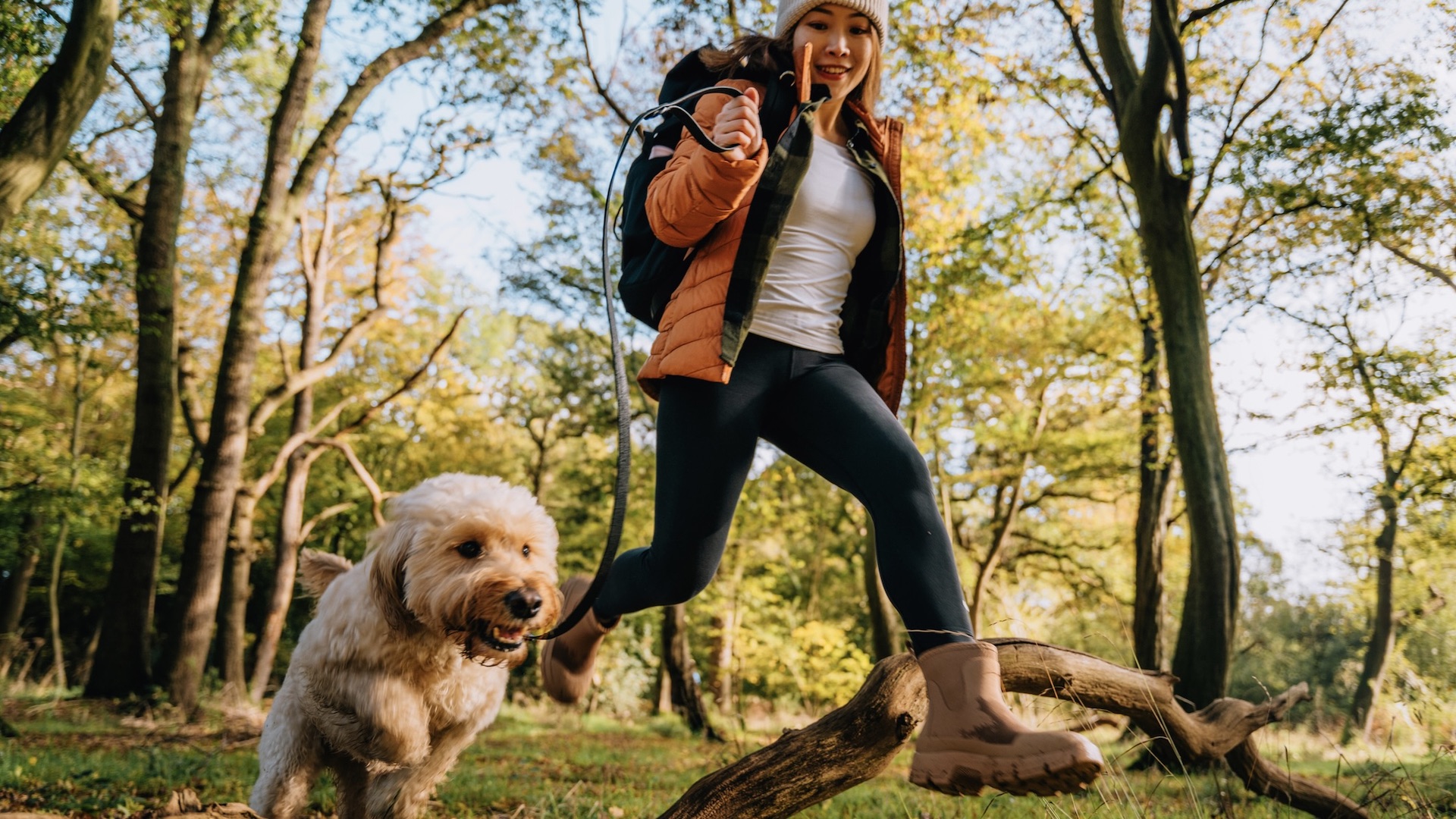
3. You’ll have to leash the dog more that you thought
Sheep: there are so many in Wales they blended into the background for me. I never noticed them, until I got a dog. Now I see them, the mountain goats and the wild ponies too. They’re round every corner.
Although Bruno looks like a city dog who likes to lounge at cafes supping puppucinos, his prey drive is strong, so he stays leashed for lots of our hikes.
Is there likely to be boar and its young in the forest you're walking in? Or are you hiking in bear country? If your pooch picks up the scent, it may well go to investigate, retreat and bring the animal back to you with it.
Seagulls make Bruno apoplectic too. So that coastal walk I was dreaming about recreating with my dog; not so dreamy in reality. I was there, treading the scree carefully with one hand for balance, the other being wrenched by the dog as he tried to get at every seagull that rose up from behind the cliff edge.
Look out for signs at the trailhead to find out if it's mandatory to leash your dog. Keep your eyes peeled throughout the hike, too. It’s easy to enter areas of ground-nesting birds, for example, when you'll need to leash your dog depending on the season.
Other places, such as US National Parks, you must keep your dog on a leash at all times.
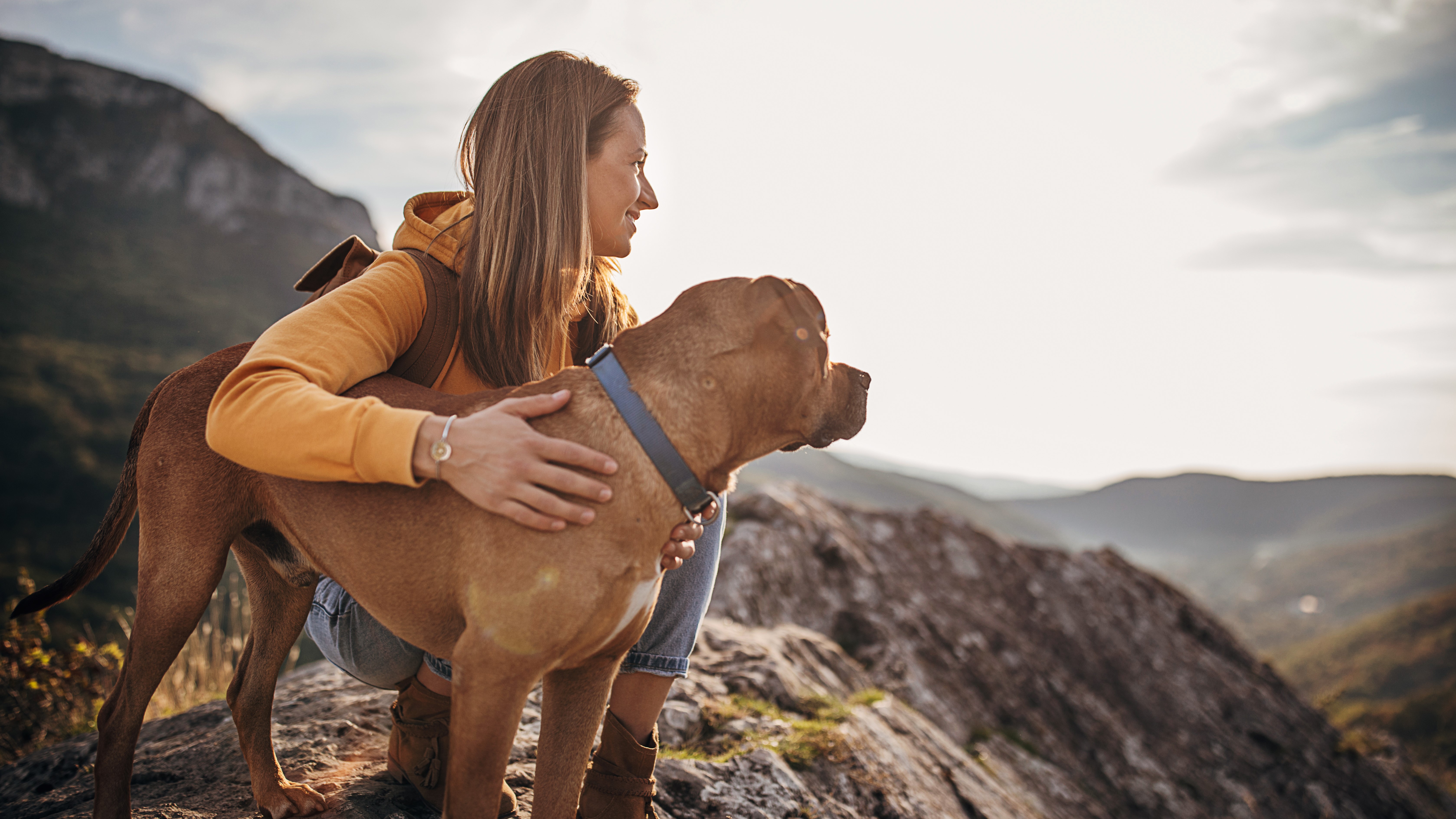
4. You’ll need to pack for both of you
Bruno’s not going to need a map to help navigate, or his own camera to get great selfies, but I was amazed at just how much extra gear I needed to stuff into my backpack on each trip.
There’s extra water and a collapsable bowl. If the weather's bad I throw in a waterproof coat to stop him from shivering if we stop for a break. Then there's all the poop bags – I layer them up to stop them stinking out my bag if there are no trashcans on route. When it comes to food and treats, I take little pouches that fold away small when empty.
I’ll take a whistle for emergencies – if he gets lost or is running into danger – and a couple of first aids supplies – tweezers, an antibacterial powder and gauze and mini bandage. There’s more advice in What to pack in your doggy first aid kit for hiking.
These extras are also handy if you can manage more kit:
- Tick remover – the trickiest place I've had to remove one from was an eyelid.
- GPS tracker, if there's a chance your dog will bolt if spooked.
- LED collar, for sunrise starts or late finishes.
- Pet washer, brush and scissors (which I leave in the van), to get off mud and plant material before it cakes or gets embedded and becomes an irritant.

5. Know your terrain and your route out
You’re always safest hiking on designated trails, and should something happen, it's good to always know your best route out.
Is there someone you can call should an incident occur? Is it a busy enough trail that someone will come to your aid should your dog get lost or injured?
When walking past a farm in North Wales once, three collies escaped their enclosure and circled me, snapping and snarling to get to my dog, which I held above my head. Luckily the farmer and his wife heard the commotion and managed to quickly catch two dogs, while the other, thankfully not so bold without his pack, saw me away from the property.
In my panic, I took a wrong turn and ended up with a long and stressful hike back. So now, I make sure I know the path I need to take before I go past a farm – just in case.
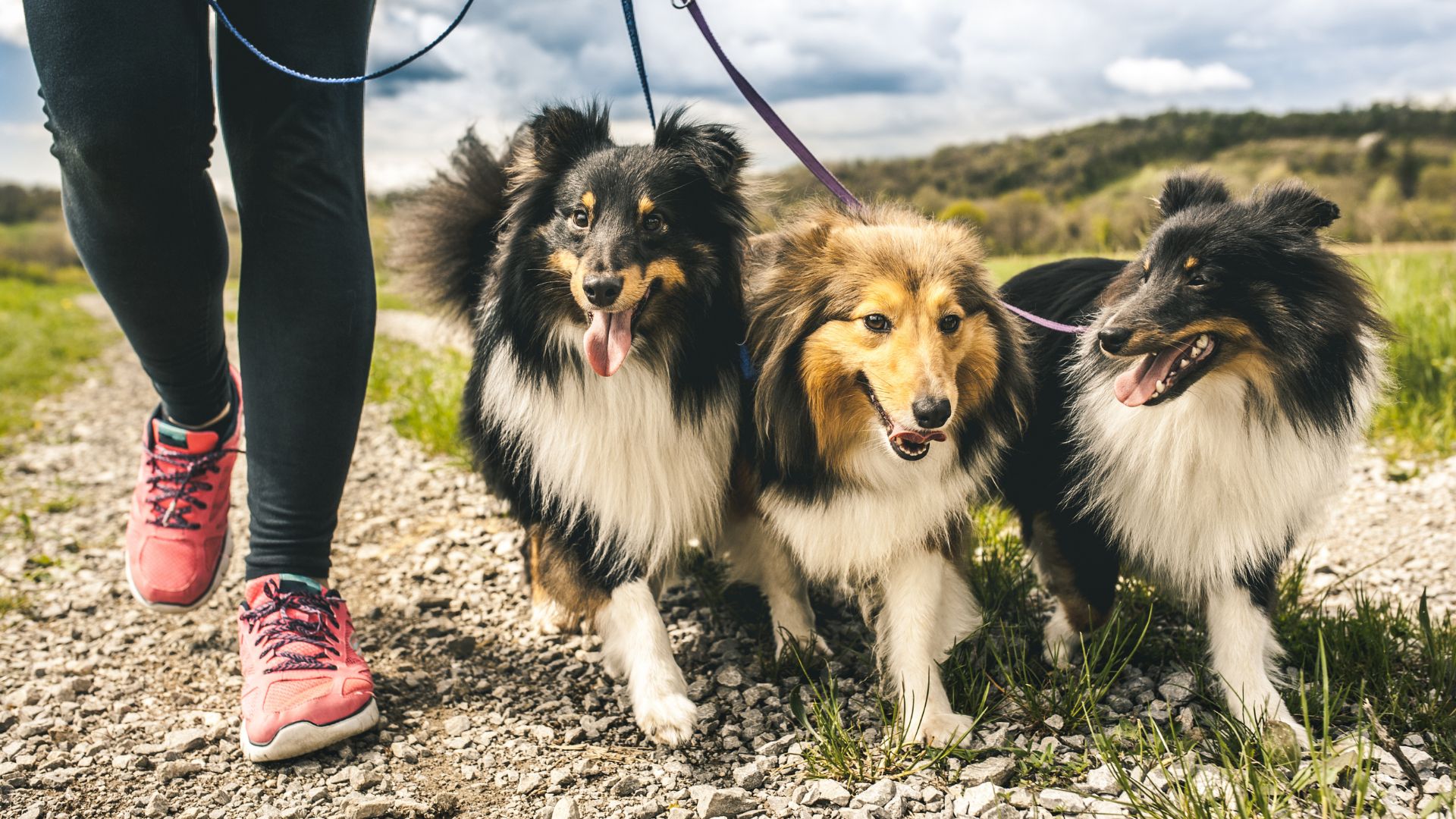
6. Sometimes it’s too busy to take your dog on a trail
Some trails don’t let dogs on at all, some require them to be leashed, and there are some times when you just have to make the call for yourself. New Year’s day we tried a short walk up the Skirrid in South Wales. It was rammed. It was muddy, slippy, kids going head over heels. So many dogs.
Bruno was stressed, hikers were tutting as he darted out in front of them, sending me sliding on the mud.
The walk didn’t clear the hangover like it should have – and we should have turned back earlier.
7. You'll learn your dog’s limits
The more hike with your dog the easier you’ll be able to read his signals. When Bruno’s had enough mountain biking he’ll jump up at my leg to let me know he's not ready to run again.
It’s more subtle with hiking. He’ll linger way back, and sniff a lot. If I’ve pushed him too far, the next day, instead of flopping and sleeping, he’ll bark all day because of his discomfort.
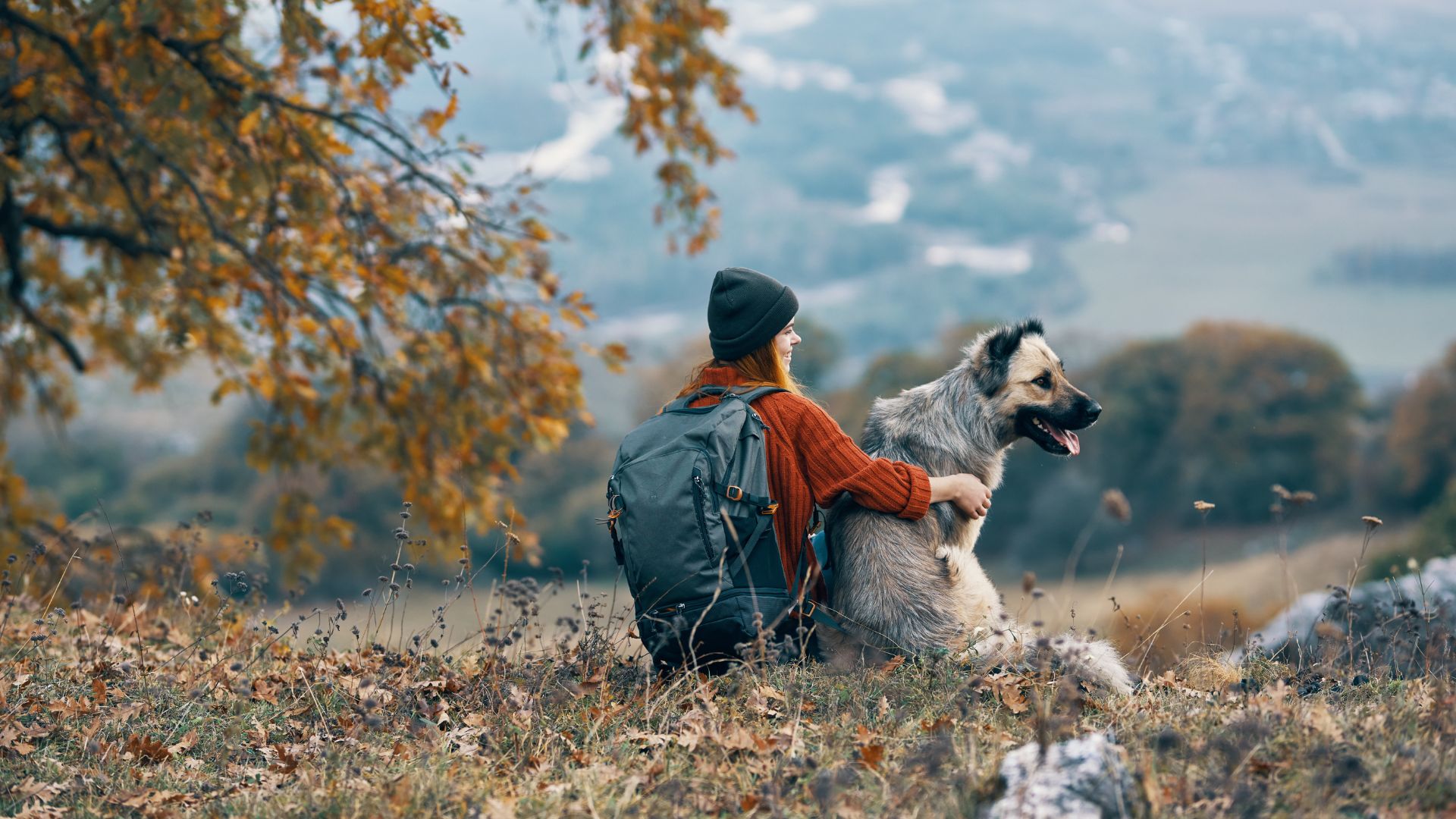
8. You'll get attached
"A dog," my neighbor told me last year, "is a good walk spoiled." She’d just had a hairy encounter with a herd of cows, and while Tuppence the savvy spaniel had escaped and found its way home, my neighbor was trapped in the field for over an hour as she waited for other walkers who managed to shoo the cows away. At first, I tended to agree with her.
And then all of a sudden it clicked. I planned and prepped, I got the kit and all of a sudden I stopped worrying and started to properly enjoy hiking with my dog.
It was in the Lake District we passed a hiker pushing a huge German shepherd in some kind of all-terrain dog stroller. “I’ve hiked for the past 10 years around with here her," he explained, welling up. "It doesn't feel the same to hike without her.”
As I turned around to walk on my way, not wanting to stare as he got the contraption over a stile, I decided to make sure I’d enjoy every last minute of my walks with Bruno.
Read more on hiking with your dog
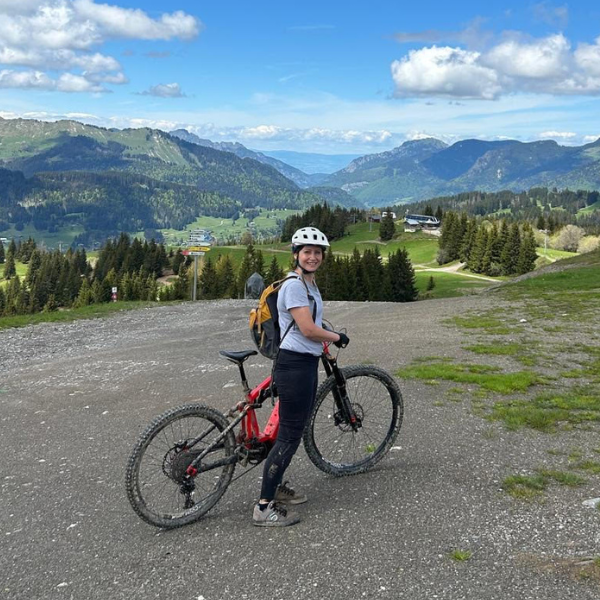
Charlie is a freelance writer and editor with a passion for hiking, biking, wild swimming and active travel. She recently moved from Bristol to South Wales and now refuses to leave her front door without one of the following: lightweight hikers, wetsuit, mountain bike, tent. Having bought a fixer-upper home that backs on to protected woodland, her love of nature and wildlife has intensified and the dark skies have kickstarted a new fondness for stargazing.
